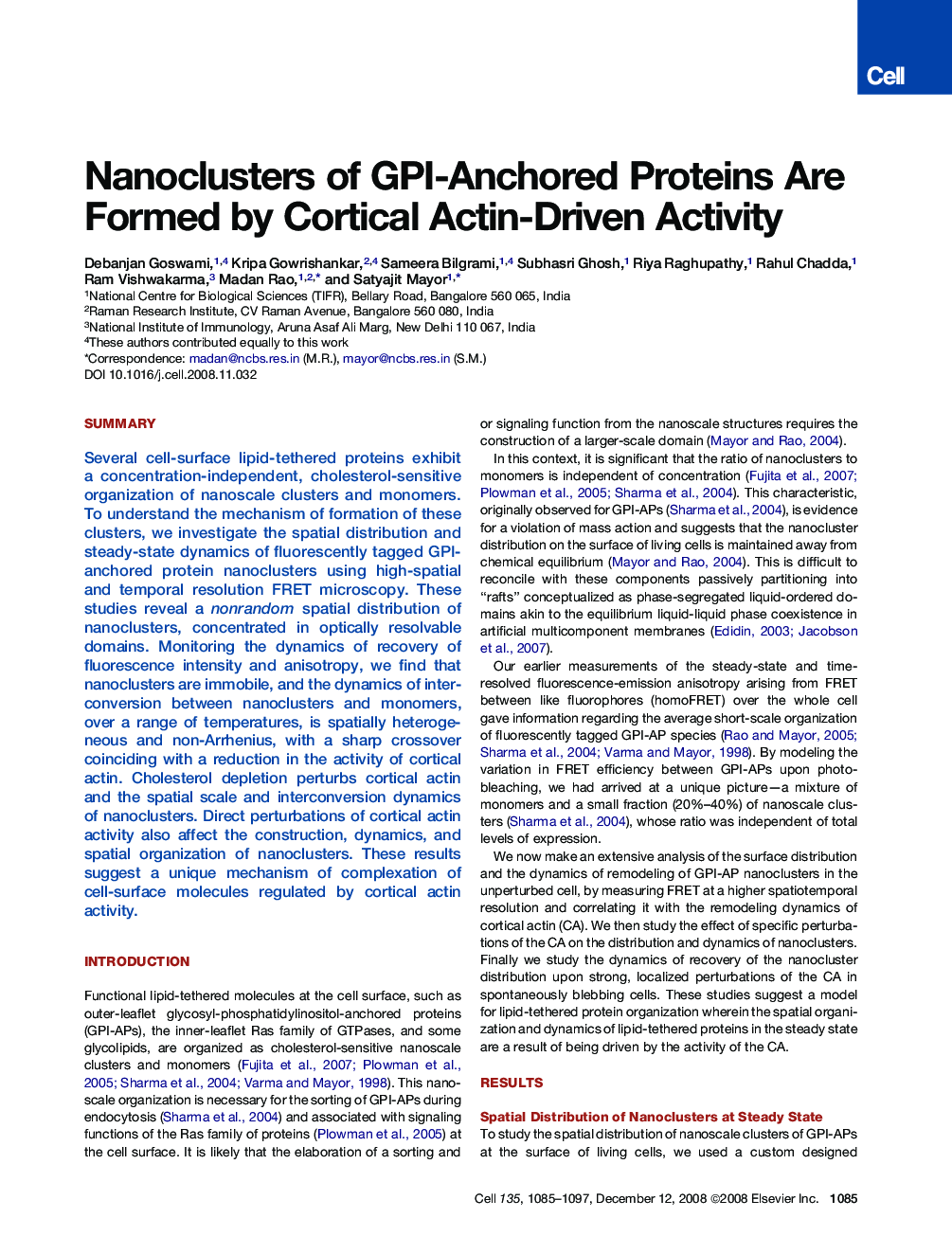| Article ID | Journal | Published Year | Pages | File Type |
|---|---|---|---|---|
| 2036933 | Cell | 2008 | 13 Pages |
SummarySeveral cell-surface lipid-tethered proteins exhibit a concentration-independent, cholesterol-sensitive organization of nanoscale clusters and monomers. To understand the mechanism of formation of these clusters, we investigate the spatial distribution and steady-state dynamics of fluorescently tagged GPI-anchored protein nanoclusters using high-spatial and temporal resolution FRET microscopy. These studies reveal a nonrandom spatial distribution of nanoclusters, concentrated in optically resolvable domains. Monitoring the dynamics of recovery of fluorescence intensity and anisotropy, we find that nanoclusters are immobile, and the dynamics of interconversion between nanoclusters and monomers, over a range of temperatures, is spatially heterogeneous and non-Arrhenius, with a sharp crossover coinciding with a reduction in the activity of cortical actin. Cholesterol depletion perturbs cortical actin and the spatial scale and interconversion dynamics of nanoclusters. Direct perturbations of cortical actin activity also affect the construction, dynamics, and spatial organization of nanoclusters. These results suggest a unique mechanism of complexation of cell-surface molecules regulated by cortical actin activity.
